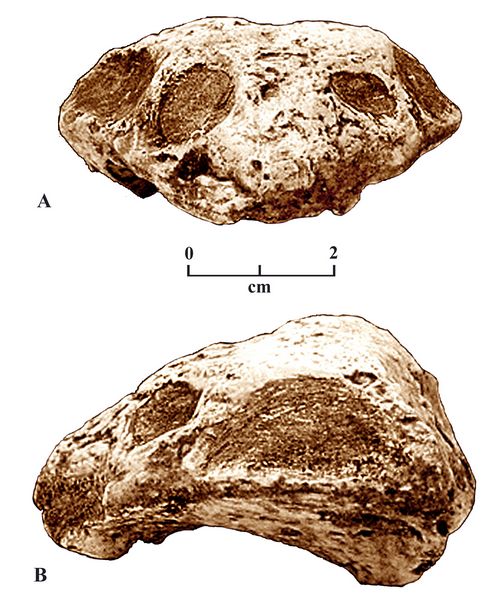Athena Review Image Archive ™
Cistecephalus augusticeps skull

Skull of Cistecephalus augisticeps. A: frontal B: lateral (from cast at Valdosta Univ.)
Cistecephalus was a small, burrowing, mole-like therapsid from the Late Permian period, found in the Karoo Valley of South Africa as well as in Zambia and India. The genus was defined in 1876 by Richard Owen. C. augusticeps is the type species of the Late Permian Cistecephalus Assemblage Zone of the South African Karoo Formation. The name cistecephalus derives from ciste- "xxxx" and -cephalus "head". It is classified as a dicynodont.
The skull dimensions are 6 cm in length and 5 cm in width. Cistecephalus
had strong forelimbs which show structural similarities to the those of
modern burrowing mammals, and its habits may have resembled those
of the modern mole. Cistecephalus
lacked teeth. It had a reduced palatine and a sharp cutting edge. Its
skull is broad and slightly convex as in present day burrowers,
for the attachment of powerful neck and shoulder
muscles.
References:
Owen 1876
King 1990
Copyright © 1996-2020 Rust Family Foundation (All Rights Reserved).